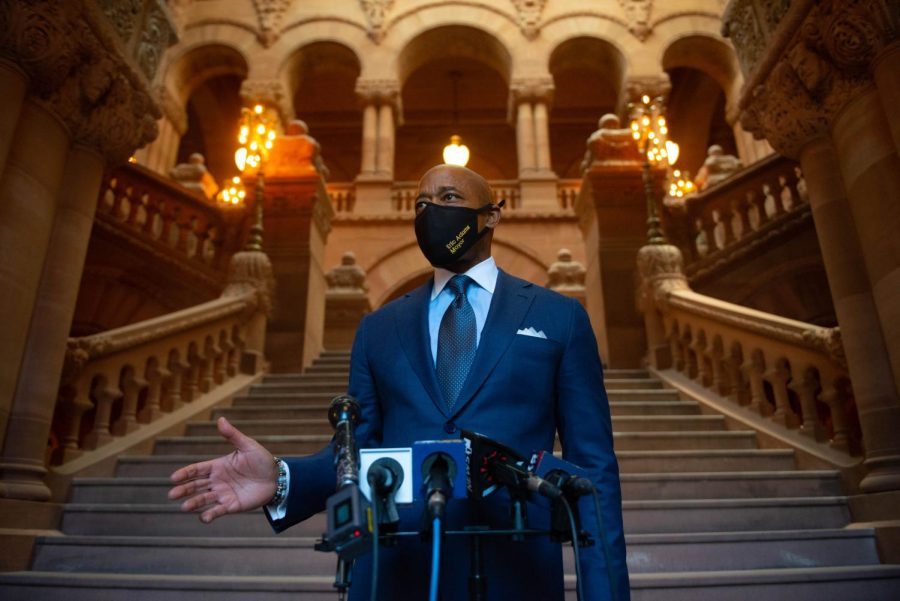Adams’s economic recovery plan echoes New Yorker’s desires
March 25, 2022
New York City is in desperate need of infrastructure reform as the COVID-19 pandemic days become more distant. With cases declining and open streets, New York City Mayor Eric Adams’ economic plan is a fast track to recovery that will be beneficial to employed New Yorkers.
Adams released an economic development plan, called “Rebuild, Renew, Reinvent: A Blueprint for New York City’s Economic Recovery,” with a concentration on fast-tracking city development projects and small business aid.
Adams’s plan also includes increased support for small businesses and aid in making New York City a tourism hotspot. New York tourism numbers are not expected to return to pre-pandemic levels until after 2025, according to The New York Times.
Adams has made a strong stance on wanting New York City offices to be filled again.
While he should leave private companies to make their own decisions about in-person working, his feelings are understandable from the point of view of a major city official. Adams, like many mayors across the nation, wants people to resume life as it was pre-pandemic.
Adams once said in a CBS News interview that people need to learn to live with COVID-19, and with his economic plan, he is trying to accelerate New York City’s economic recovery.
“We must learn to live with COVID, and we have to do it a safe way,” Adams said on keeping schools open at the time.
Two years into the COVID-19 pandemic, New York City is met with multiple economic challenges including sales tax revenue dropping by $111 million per year.
Adams’s recovery plans include investment in Hunts Point, Bronx infrastructure and the redevelopment of the Hunts Point Produce Market. Specifically, Adams is calling for a five-year investment made up of over $100 million to improve the 55-year-old area and an added $40 million.
In comparison, former New York City Mayor Bill de Blasio announced a $150 million investment in Hunts Point Market in 2015. Adams spoke at the Hunts Point Market and called the budget proposal an “opportunity to reboot our entire system.”
Adams has support for the Hunts Point Market restoration from New York State Senator Alessandra Biaggi. Biaggi correctly pointed out how New York City’s recovery depends on the recovery of the Bronx.
“New York City’s economic recovery is closely tied to the economic recovery of the Bronx,” Biaggi said. “The Hunts Point Produce Market is not only one of the most vital resources in the city’s food supply system but also a crucial fixture for the Bronx’s communities and economy.”
The plan also calls for the promotion of entrepreneurship in communities of color.
It is no surprise that he has made that call since marijuana has finally been legalized in New York, creating an economic path of freedom for the same communities of color where earlier anti-marijuana legalization laws affected the most.
With marijuana businesses soon to arrive, the recovery plan calls for financial support and technical help to aid marijuana businesses owners in successfully launching their businesses without interference from opposing parties. This needs to happen as earlier reports showed that marijuana shops would not become available until 2022.
If Adams genuinely wants New York City to be better, an economic plan supporting art and culture institutions in the city is necessary as well. In the blueprint, he does call for a data-driven approach to equal distribution of arts funding.
Adams’ economic plan should be interpreted as a thank you letter to the essential services that kept the city floating during the darkest days of the pandemic.
Adams realizes that generous funding and public safety is the path to an excellent quality of life making his economic plan music to citizens’ ears.








